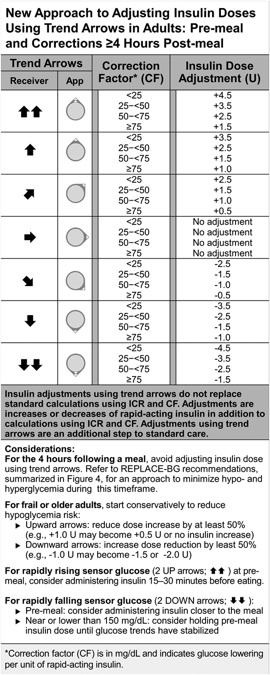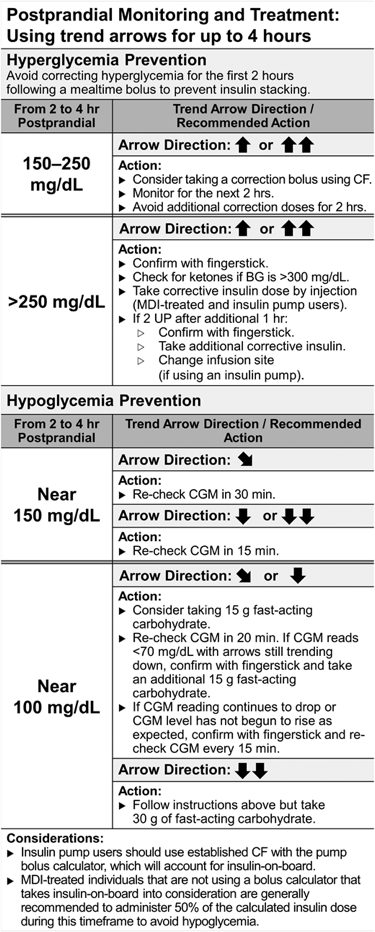Adjusting Insulin Based on CGM: New Guidelines from Endocrine Society
By Emma RyanAdam Brown
 By Emma Ryan and Adam Brown
By Emma Ryan and Adam Brown
New dose adjustment recommendations for adults and children using Dexcom's G5 CGM based on trend arrows and insulin sensitivity
The Endocrine Society recently published a pair of recommendations – one set of guidelines for adults and one for children – on adjusting insulin dosing based on Dexcom G5 CGM trend arrows. Improving on previous guidelines, these recommendations take into account an individual’s insulin sensitivity, which means how much one unit of insulin is expected to lower blood sugar – also known as the “correction factor." The guidelines also give separate recommendations for children and adults and require less math since they give a specific change in insulin units rather than a percentage change.
These new recommendations do not replace standard calculations for insulin dosing, but they may help to fine-tune doses for those wearing Dexcom’s G5 continuous glucose monitoring (CGM) system. For instance, when blood sugar is rising, more insulin may be needed; when blood sugar is falling, less insulin may be needed. The amount differs depending on how sensitive someone is to insulin, as well as how pronounced the trend is.
The tables below summarize the adjustment guidelines for insulin dosing before a meal and more than three hours after a meal (corrections). They are separated by adults (first picture) and pediatrics (second picture), different CGM trends (rising, neutral, or falling), and different insulin sensitivities.
For example, an adult with a correction factor of 30 (i.e., one unit of insulin lowers blood sugar by 30 mg/dl) would:
-
Add 3.5 units to the calculated insulin dose for a double rising arrow;
-
Subtract 3.5 units from the usual insulin dose for a double falling arrow.
This recommendation changes to +1.5 units for the same double rising arrow in someone with a more insulin-sensitive correction factor of 80 (i.e., one unit of insulin lowers blood sugar by 80 mg/dl). That same insulin-sensitive person would subtract 1.5 units dose for a double falling arrow. For children, the recommended dose adjustments are also smaller.
If you wear Dexcom CGM, you can find the dose adjustment recommendation that applies to you in the pictures below – find your correction factor in the middle column and make sure to use the proper table (adult or child). Based on the trend you observe (left column), you’ll find the recommended insulin dose adjustment in the right-most column. As always, work with a medical professional before making any major changes to your insulin dosing. You may also need larger or smaller changes than these tables advise, depending on your experience and circumstances.
Are you wearing another CGM device, like Medtronic’s Guardian Sensor 3 or Abbott’s FreeStyle Libre? For now, don’t use these guidelines, which are device specific. Though Abbott’s FreeStyle Libre is also FDA approved for dosing insulin, these guidelines are designed only to be used with Dexcom’s G5.
These publications are just recommendations for users to implement on their own, but they could ultimately help in the development of CGM-based insulin dose calculators. For instance, a CGM “decision support” app could give users automatic dose adjustment guidance, based on a user’s settings, real-time CGM trends, and even recent patterns. We know Dexcom is working on this, at least based on a conference presentation last fall. Bigfoot Biomedical and Lilly are also both working on injection dose guidance apps based on CGM information and smart algorithms.
Beyond dose guidelines, the publication also gives recommendations about how to monitor blood sugar trends 2-4 hours after a meal. Within this window, insulin doses are still acting to lower blood sugar, so additional caution is warranted. See the third picture below.










